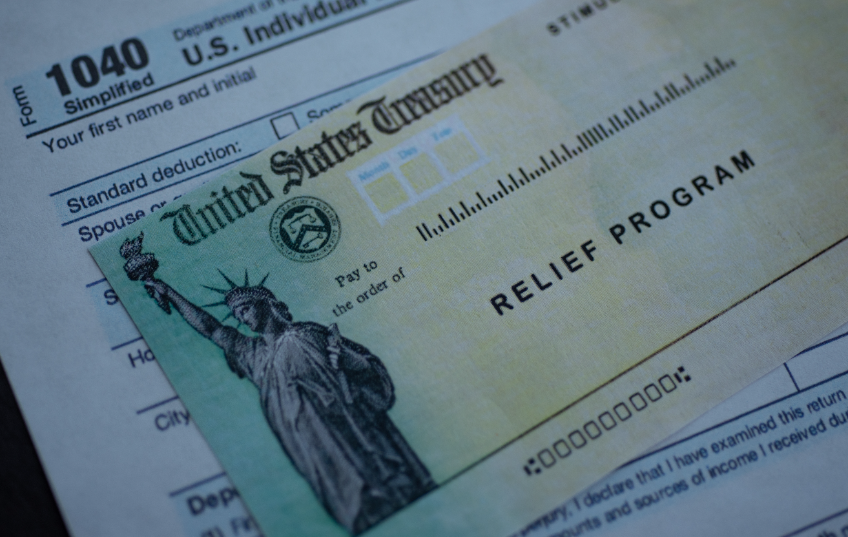That $10,200 Unemployment Tax Break Makes Me Wonder, “How much will I get back?”
Published:
What is the Unemployment Tax Break?
The pandemic unemployment credit.
The recent $1.9 trillion COVID-19 stimulus bill signed by President Joe Biden includes an Unemployment Tax Break designed to provide relief for taxpayers who have lost their jobs due to the pandemic. The Tax Break will exempt up to $10,200 worth of unemployment benefits received in 2020 from taxable income for certain individuals. But does this mean the full amount of $10,200 will lower your taxable income or will it only provide a tax credit or deduction? Let’s explore more.
Does the $10,200 lower your adjusted gross income?
The $10,200 Unemployment Tax Break provides significant relief to individuals who have lost their jobs due to the pandemic. If you are eligible, it can help lower your taxable income and, in turn, reduce the amount of taxes you have to pay.
The tax break works by allowing eligible recipients to exclude up to $10,200 of jobless benefits received in 2020 from their taxable income. This means that if you received $10,200 or less in unemployment benefits in 2020, you can exclude the full amount from your taxable income. If you received more than $10,200, you can only exclude the first $10,200.
The $10,200 tax break acts as an exclusion, not a tax credit or tax deduction. A tax credit is a dollar-for-dollar reduction in the amount of tax owed, while a tax deduction reduces the amount of taxable income before the tax is calculated. However, an exclusion removes the income from your tax return altogether.
To apply the exclusion, eligible taxpayers need to file the Schedule 1, Additional Income and Adjustments to Income, of the Form 1040 tax return. The unemployment compensation exclusion is reported on Line 7 of the Schedule 1, which then flows to Line 8 of the Form 1040.
It is important to note that the exclusion can affect your Adjusted Gross Income (AGI) and may impact applicable non-refundable or refundable credits. The AGI is calculated by taking your total income and subtracting any deductions, including the $10,200 exclusion. This means that a lower AGI may increase your eligibility for certain tax credits or deductions.
The $10,200 unemployment tax break provides significant help to those who have experienced job loss due to the pandemic. By filing your tax return with the Schedule 1 form and including the unemployment compensation exclusion, you can lower your taxable income and potentially increase your eligibility for other tax credits and deductions.
How the $10,200 Tax Break Works
The $10,200 Unemployment Tax Break can be a game-changer for those who have lost their jobs due to the pandemic. To determine your eligibility for the tax break, you should estimate your total earnings and unemployment benefits received in 2020. Once you have your total earnings and unemployment benefits, you can then calculate your taxable income by subtracting any applicable deductions, including the $10,200 exclusion. From there, you can subtract your applicable non-refundable or refundable credits to reduce the amount of taxes you owe. With these steps, you can take full advantage of the $10,200 Unemployment Tax Break and potentially receive a tax refund.
Estimating Eligibility
The $10,200 Unemployment Tax Break is designed to help households facing financial hardship due to job loss during the pandemic. However, not everyone is eligible for this tax break. In fact, there are specific criteria that must be met to take advantage of the relief it provides.
Whatever your filing status, you couldn’t take the tax break on any unemployment income if you earned $150,000 or more in 2020.
If your household income falls within this limit, then you may be eligible for the $10,200 Unemployment Tax Break. To qualify for this tax break, you must be a single filer who worked for part of 2020, but then became jobless for a short time. You must have also only received $10,200 or less in jobless benefits in 2020.
Calculating your eligibility for the tax break can be complex. However, by taking into account your Adjusted Gross Income (AGI), jobless benefits received, and your filing status, you can determine if you qualify for the $10,200 Unemployment Tax Break. If you do meet the qualifications, you could benefit from a potentially significant tax refund.
Total Earnings and Unemployment Benefits
Calculating total earnings and unemployment benefits is a crucial step in determining eligibility for the $10,200 Unemployment Tax Break. To accurately assess your eligibility, you must consider all sources of income, including wages, salaries, bank interest, and unemployment benefits received.
Now, let’s talk about the tax year 2020. In response to the coronavirus pandemic, the federal government provided relief for taxpayers receiving unemployment benefits. The first $10,200 of unemployment income were tax-free for those with an AGI of less than $150,000, regardless of filing status. This means that if you received unemployment benefits in 2020, you may be able to exclude up to $10,200 from your taxable income.
It’s important to determine your total earnings to assess your eligibility for the break on unemployment benefits. If your total earnings, including unemployment benefits, fall below the $150,000 AGI limit, then you may qualify for the $10,200 Unemployment Tax Break. However, if your total earnings exceed this limit, you may not be eligible for the tax break.
To accurately calculate your total earnings, you should reference all of your income sources for the tax year 2020. This includes your wages, salaries, bank interest, and unemployment benefits. By doing so, you can determine if you meet the income requirements for the Unemployment Tax Break and potentially benefit from a significant tax refund.
Calculating Your Taxable Income
After receiving unemployment benefits, it’s important to calculate your taxable income accurately to ensure you pay the correct taxes and potentially benefit from the $10,200 Unemployment Tax Break. To do so, you must include all income received from unemployment benefits and any additional income earned from other sources.
To start, add up all the unemployment benefits you received throughout the year. This amount is taxable income and must be reported on your tax return. Next, add up any additional income earned from other sources, such as wages, tips, or other government aid. This includes income received from side hustles or gig work as well.
Summing these amounts together gives you your total earnings for the year. To calculate your taxable income, you must then subtract any allowable deductions. Allowable deductions can include student loan interest or contributions to a retirement account. Subtracting these deductions from your total earnings gives you your Adjusted Gross Income (AGI).
Your AGI is used to determine your eligibility for various tax credits and deductions, including the $10,200 Unemployment Tax Break. If your AGI falls under the $150,000 threshold and meets other eligibility criteria, then the first $10,200 of unemployment compensation will not be subject to federal income taxes.
It’s always a good idea to consult with tax professionals or use tax software to ensure that you have accurately calculated your taxable income and eligibility for any tax breaks. By understanding your taxable income, you can make strategic decisions to potentially benefit from a higher tax refund or reduced tax liability.
Subtracting Your Applicable Non-Refundable or Refundable Credits
Once you have calculated your taxable income to determine your eligibility for the Unemployment Tax Break, it’s important to subtract any applicable non-refundable or refundable credits from your total taxable income.
Non-refundable credits, such as the Earned Income Tax Credit or the Additional Child Tax Credit, can reduce the amount of taxes you owe. On the other hand, refundable credits, such as the Recovery Rebate Credit, American Opportunity Tax Credit, Premium Tax Credit, and the Advance Premium Tax Credit, can also result in a tax refund.
These credits may be impacted by the Unemployment Tax Break, and it’s important to ensure that you are subtracting all eligible credits from your taxable income. By doing so, you can potentially reduce the amount of taxes owed or receive a higher tax refund.
It’s crucial to determine your eligibility for all of the credits mentioned above to maximize your tax benefits. You can consult with tax professionals or use tax software to ensure that you accurately subtract all eligible credits from your taxable income.
In summary, subtracting your eligible non-refundable or refundable credits from your taxable income can result in a reduction of taxes owed or a higher tax refund. Some credits that may be impacted by the Unemployment Tax Break include the Earned Income Tax Credit, Recovery Rebate Credit, Additional Child Tax Credit, American Opportunity Tax Credit, Premium Tax Credit, and Advance Premium Tax Credit. Make sure to subtract all applicable credits from your taxable income to potentially benefit from the Unemployment Tax Break.
Filing Status Considerations for the Unemployment Tax Break
When approaching the Unemployment Tax Break, it’s essential to consider your filing status. Your filing status can affect your eligibility for the tax break, so it’s important to know what to expect. Here are a few things to consider based on your filing status:
Married Filing Jointly
If you are married and filing jointly, the $10,200 tax break applies to each spouse, not just one. This means that if both you and your spouse received unemployment benefits in 2020, you could potentially qualify for a tax break of up to $20,400.
However, keep in mind that if your household income exceeds $150,000, regardless of filing status, you will not be eligible for the tax break.
Single Taxpayer
If you are a single taxpayer, the same $150,000 income limit still applies to you. This means that if your income exceeds the $150,000 threshold, you will not be eligible for the tax break.
Other Filing Statuses
For other filing statuses, such as head of household or married filing separately, the $10,200 tax break applies to each individual separately. However, the same income limit of $150,000 still applies.
Overall, it’s crucial to consider your filing status when determining your eligibility for the Unemployment Tax Break. Keep in mind the income limit and how it may differ based on your filing status. By doing so, you can potentially qualify for the tax break and reduce the amount of taxes owed.



